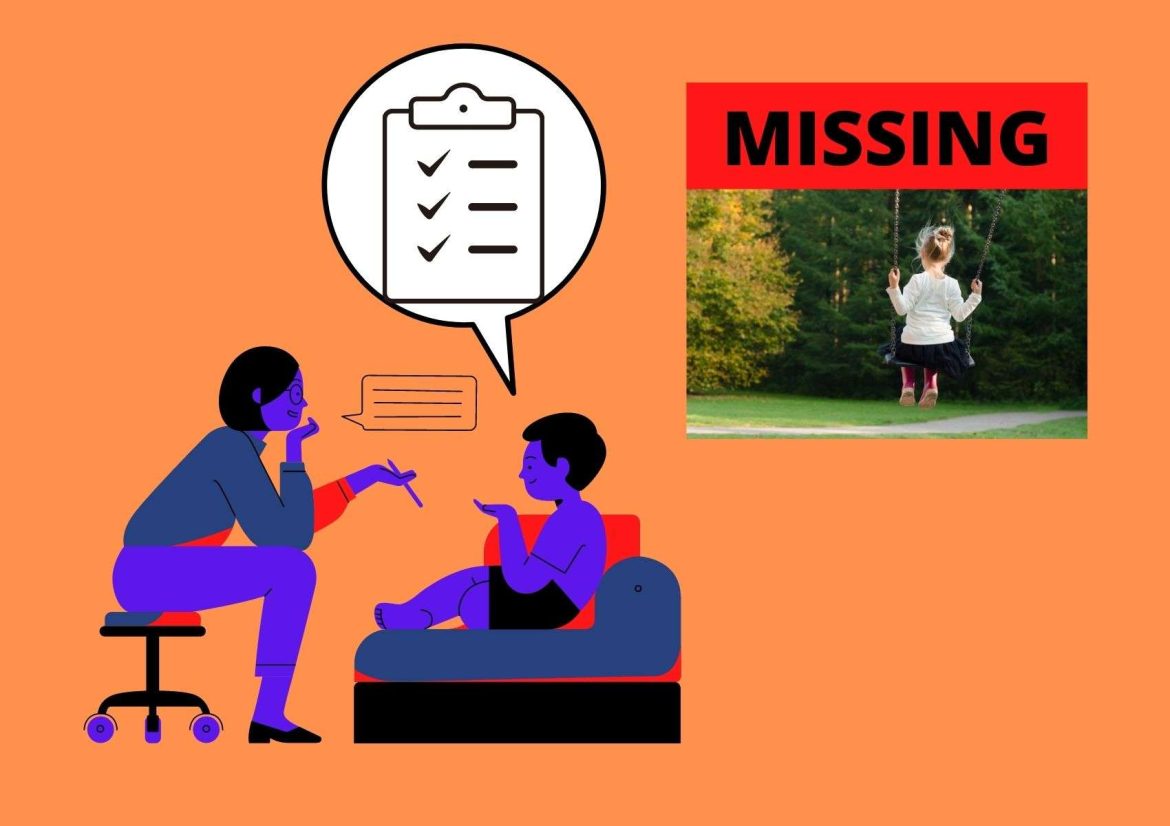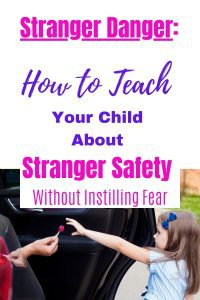Learn how to teach your children about stranger danger without instilling fear.
The issue of child abduction is like a global pandemic. It cuts across all races and ethnicities in the world.
The statistics from the NCMEC show that there were 337,195 NCIC reports for missing children in 2021. Though it was a slight drop from the previous year, which recorded 365,348, it is still alarming.
Missing children by age and race -statistics from NCMES
The NCME statistical analysis on attempted abductions of kids by unknown people shows that children who evaded abductions responded by either;
- Ignoring the abductor,
- Screaming to draw attention,
- Using the cell phone to threaten,
- Fighting back.
As a mother, this is good news, but of course, it gets me thinking;
Did the victims have prior training on stranger danger, or was it an instinctive response?
Whichever way one might want to look at it, I presume that they had some prior knowledge of how to act in such a situation.
The concept of stranger danger is not new.
I remember my grandparents gathering us for bedtime stories during my childhood. Some of the stories were scary, others exciting, depending on the lesson they intended to pass on.
The most memorable stories are those relating to strangers.
I remember how my grandfather would talk about children who agreed to give directions to strangers. Only to realize that the well–dressed stranger was a hyena looking for super and not a lost stranger as perceived.
These stories could instill fear of strangers in our tiny minds. And till now, though I am of age and understand that they were fiction, the morals of stories have never departed from my mind.
Its been over twenty-five years since my first encounter with the word “stranger danger,” but the perpetrators’ tactics remain pretty much the same. Luring innocent kids through pretense.
But then one may ask;
What does stranger danger Mean?
The term stranger danger is mainly used when referring to unknown people whom society perceives as having the potential to hurt children. In most cases, they do not use violet means but ride-on children’s innocence to lure them into their intended malice.
Their aim is to abduct for slavery purposes, rape, or killing.
Times have changed, though, and we no longer limit strangers to unknown people alone. Neither do we teach children to identify bad strangers by their looks.
We have witnessed perpetrators of children’s crimes like abduction and rape being the very known and trusted figures in their life. Most of them dress casually. They don’t hide their faces like the Hyenas in our stories, Who would put on mavins and gaggles to hide their authentic looks.
But does that mean that the term Stranger Danger is outdated?
The answer is yes and no.
Yes, it may be outdated since we’re no longer talking about unknown people only but even the very own family members who have gained trust with the child. In fact, unknown people only account for about 1% of the reported cases.
On ther other hand, it’s not outdated since unknown people still remain perpetrators of these barbaric acts.
Recently, Child Safety Educators like pattie Fitzgerald started advocating for the use of the word “tricky person” instead of ‘Stranger Danger,” When discussing children’s safety.
Pattie argues that using the word stranger danger can paint a picture of a dangerous-looking or scary person, which is not the case. She argues that it’s not just strangers who are potential dangers to children but also the very known people.
Though I agree with her sentiment 100%, in this post, I choose to use stranger safety, but I might interchange where appropriate.
I prefer to talk about stranger safety instead of stranger danger since still have millions of very nice strangers out there.
The challenge is the inability to differentiate between strangers with good intentions and those with ill motives. That is why kids need to learn about safety measures to maneuver their lives without fear.
So,
Why is it important to teach kids about stranger safety?
Times have changed, and it’s almost impossible to be with your child everywhere. Similarly, the collective societal responsibility for children’s upbringing is slowly eroding as adults concentrate more on minding their business. Thus, a significant need to equip your child for their safety.
According to Research, teaching children about personal safety may help in the following ways:
- Reduces the risk of a child vices in society through child empowerment
- It helps the child to identify and respond to an unsafe situation appropriately.
- Increases a child’s sense of confidence by knowing that there are safe strangers he can run to for help
- It increases a child’s knowledge about their surroundings and rights.
- It increases your child’s chances of speaking out about people’s bad or unsafe behavior and telling someone they trust.
Related: How to Raise Financially Responsible Children (Your Practical Guide)
At what age do children need to know about stranger danger?
There is a time when parents’ knowledge about strangers can save the child. For example, when you get a tricky person coming in the name of a nanny.
Your instincts, change in child’s behavior, or cross-examination of their background may hint at who you are dealing with and help you take necessary actions.
After the child becomes aware of their surroundings, say 4 to 5 years, it becomes our duty to educate them in a friendly manner. Let the kids know that some people may come among us who do not mean well.
I know it’s scary even for a parent to think about these issues. But do it anyway.
Children tend to grasp the concepts quickly. Thus, by introducing these lessons at an age, you create an awareness of what it means for someone to be a stranger. They also get to understand their surroundings and why it’s wrong to trust everyone.
If you still feel frightened with this type of topic, always remember that your kid may be getting information from elsewhere. And by the time you start training them, it might be quite late to recondition their mind. As a parent, always strive to be their first teacher and protect them from the junks that are all over.
Enough of introduction.
Who Is a Stranger?
Kids see strangers every day. You take them to the supermarkets for shopping; they meet strangers. You take them to parks, churches, or neighborhoods, and they still meet strangers.
That is why generalizing strangers as dangerous people becomes tricky.
When teaching stranger safety, It’s good to insist that most of these strangers are nice people while a few are dangerous. And that you can only differentiate the dangerous from the nice ones by looking at their suspicious behavior and taking necessary precautions.
So how do you define a stranger to a preschooler?
Parents, please let us sit down, then pretend that we are kids in a group playing outside. One of us comes running and tells us that she met a stranger.
What runs into our minds?
Maybe a scary person dressed in black or an armed and dangerous person. We may try to pull around all the strangers we’ve seen in movies or cartoons.
But is it true?
A stranger, maybe anyone that your family doesn’t know well. Let your child know that a tricky person or unsafe stranger is anyone asking them to do something that doesn’t sound right.
It doesn’t matter whether you know them or not. As Pattie Fitzgerald says, the stranger might be asking them to break one or more of their family rules.
When talking about stranger safety to your children, explain that no one can differentiate good strangers from tricky ones just by looking at them. Thus, they should be careful around all strangers.
How do you identify tricky or bad strangers?
Since it’s difficult to identify one’s motive by looks, the following are red flags to help children identify unsafe strangers.
Focus on behavior, not appearance
Whether they are known or unknown to the family, teach your child to be suspicious of any adults who are displaying the following behaviors;
If you’ve met someone in a shopping mall or somewhere else, then the person insists on being alone with the child; that is a potentially tricky person, and the vetting should begin immediately.
- An adult asking kids for help – Is also alarming. why kids? There are adults who can render the help.
- Adults offering treats –Without asking permission from the child’s parent
- Someone who is asking the kid to disobey their parent, or making the child do something contrary to what their parents or guardians taught them. That is a potentially unsafe stranger.
- An adult asking you to ride in their car or leave the place without your parents- is a potentially tricky person.
- Any person who wants you to do something but insists that you keep it a secret is not good.
- Anybody who threatens you
- Anyone who makes you feel uncomfortable in any way; is a tricky person.
- Anyone touching you inappropriately, like tickling you in private areas- is a potentially unsafe stranger.
Basic Stranger Danger Rules
Once your kids understand what a tricky person is, you also need to tell them what to do about it. Here are some things you can tell your child:
- Never go anywhere with a stranger
- Never accept gifts like sweets and pets from a stranger
- Never get in a stranger’s car, even if it’s a lift
- Never go off on your own without telling your parents or a trusted adult
- It is okay to break the rules of life, like disobeying an adult if you are not comfortable around them.
- Always encourage your child to speak loudly whenever they are with strangers.
- Tell your child to always stay with their friends instead of playing alone.
- Encourage them to report the issue to a safe stranger or trusted adult if they suspect that something is not right.
- Teach them to trust their gut. If someone’s actions make you frightened such that your legs tremble, your heart beats faster, and you get butterflies in the stomach, it’s probably not safe.
- If you feel like someone is following you but can not identify the person, go to a safe stranger and inform them to call your parents.
- Follow the NO, GO, YELL, TELL rule. Teach your child to say No to a trick person, run away, yell or scream as loud as they can even if they are indoors, and tell a trusted adult about what happened right away.
Safe Strangers and Places
Teaching children about stranger danger is two-way traffic. Not only should they know about tricky people or bad strangers with the potential of harming them, but they should also have an idea of where to seek help in case you are not around. For instance;
- Let them know strangers they can trust if they need help.
- Teach them about their surroundings so that they can know safe places or landmarks in case they are lost
- Teach them to trust their guts or instincts
- Let them know that adults are not always right and that disobeying instructions that are not in line with their values is not wrong.
- Teach them to be assertive
Who are Safe Strangers?
Safe strangers are people children can ask for help with when they need it.
Safer strangers could be Police Officers, traffic wardens, or even shopkeepers. Most of the time, people in uniform like police or shop guards have proved to be a safe haven. They can assist in giving directions or helping find a child’s family if they are lost.
Safer buildings teach your kid to recognize safe buildings like banks, medical facilities, police posts, post offices, libraries, shops, and supermarkets. By entering these buildings, they are sure to find a safe stranger or ask for help from people working there.
Help your child to learn the art of self-confidence to be able to approach these people. As you walk with them, teach them to great the safe strangers
Unsafe places; Be sure to mention unsafe places so that they don’t find themselves making it easier for the tricky strangers. This can be lonely paths or streets, shortcuts with overgrown plantations, or abandoned or incomplete houses.
How to recognize and handle dangerous situations
Training your child to recognize dangerous situations is crucial in stranger danger lessons. Play the what-if … For easy comprehension.
For example;
- A nice-looking stranger approaches your child in the park and asks for help finding their lost dog.
- A man who lives alone in your neighborhood invites your girl into his house for a snack.
- A stranger asks if your child wants a ride home from school.
- Your child thinks they are being followed.
- An adult, who is well known to your family, says or does something that makes your child feel uncomfortable.
- While your child is walking home from playing, a car pulls over, and an adult stranger asks for directions
What Else Can You Do As a Parent?
In addition to teaching children how to recognize and handle dangerous situations, parents can do a few more things to help their children stay safe. This includes;
- Knowing where your children are at all times. Let your child learn how as ask for permission or check in with you before going anywhere.
- Teach children about trusting their intuition and guts if they feel uncomfortable.
- Teach your children to be assertive. Ensure they know that it’s okay to say no to an adult and scream or run away from adults in dangerous situations.
- Teach your children the importance of playing with others instead of being alone most of the time.
- Teach your children about safer routes to follow from schools or shops.
- Try vetting nannies or people thoroughly before entrusting them with your child.
- Create some time with your child to know what is happening in their life.
- Learning to trust your child’s story even as you do your investigations
- Get your children relevant books and activities that teach stranger danger.
Related: 9 Great Ways to Raise Street-smart Children For Today’s Life Demands
Takeaway
How Best Can You Teach Your Child About Stranger Danger?
Stranger danger is a broad topic that must be incorporated into children’s life as early as four years. You may make the lessons fun through;
- Role-play and practice responding in different scenarios.
- Establish a family code word. Anyone sent to pick up your child must use the code word, so the child knows it’s safe to get in the car.
- Identify safe adults, like police officers, whom children can go to if they sense danger.
- Explain to your child that if they get lost, they should find another mommy with kids and ask her to help them find their mommy.
- Make guidelines for being home alone, such as how to answer (or not answer) the door or phone.
UP NEXT:




